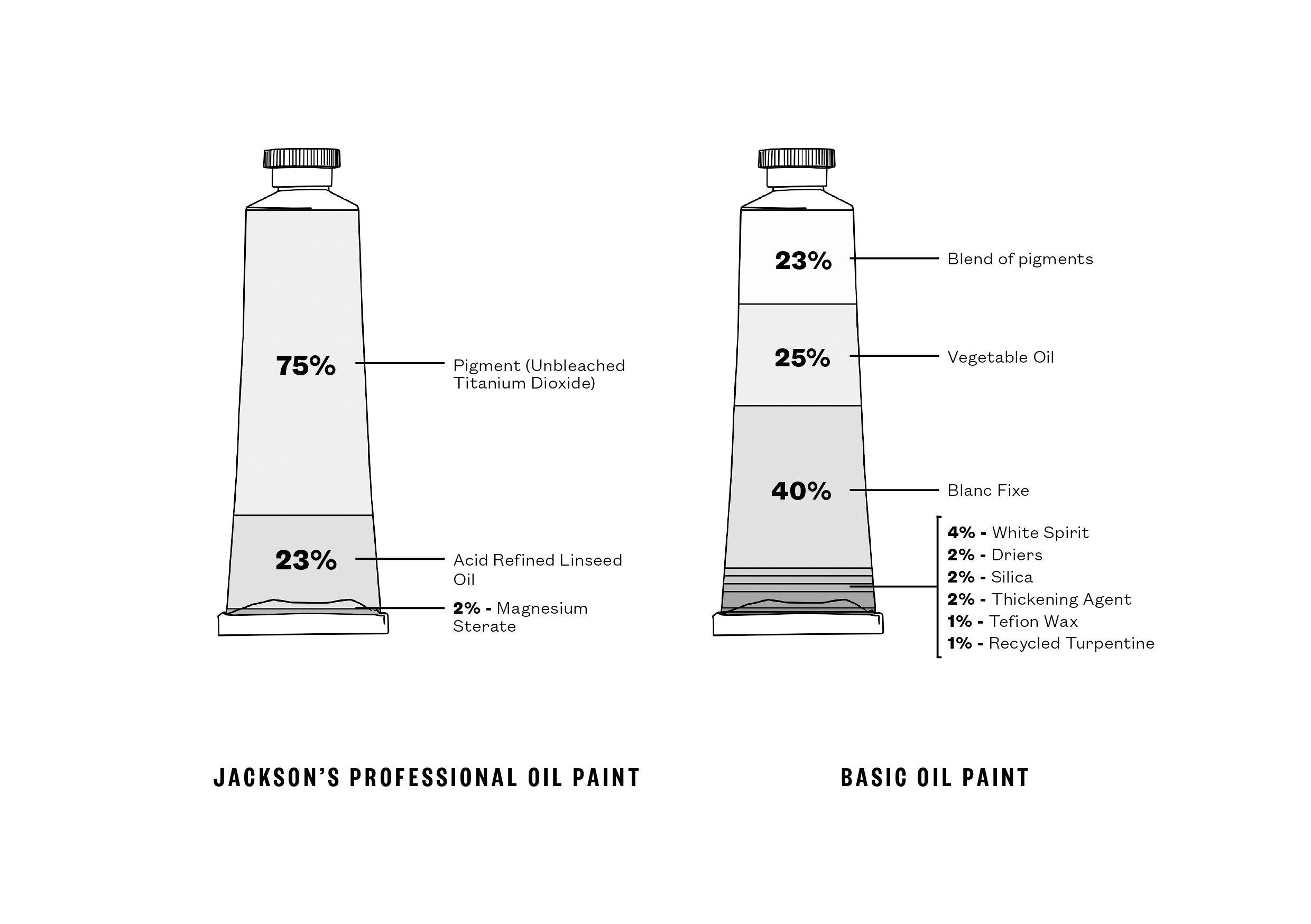Hello all,
I was just reading an article from the UK art supplier (and manufacturer) about their own professional oil paint range:
In the article they show an example of the proportion or ingredients used and I was suprised to discover that instead of using Aluminium Sterate they use Magnesium Sterate. I have not heard of this before.. would I be correct in thinking it would work similarly to Aluminium Sterate but have a drying action?
I find their paints well pigmented, and good value for money, but too stiff and fast drying in some pigments for my personal tastes.
Thank you Matthew for clarifying 🙂
Are there any appreciable differences between the two types of Stearates mentioned here?
BTW: The forum is not updating the last comment date/time, which is why I missed these replies.
Magnesium and Aluminum Stearate have the same functions in oil paints, as stabilizer or filler, because a small amount of either can “gel” drying oils. When these waxy-feeling powders are used to preserve the consistency of the paint as it left the mill (by binding oil that separates in storage), the role is “stabilizer”. When added to achieve a workable paste in paint that is under-pigmented, the role is “filler”. Magnesium Stearate is a very common rheological modifier for oil-based printing inks, and it’s not uncommon in manufactured oil paints- I know it’s included in at least one Winsor and Newton white oil paint. I am not aware of any catalytic siccative (drying) action associated with Magnesium Stearate.
Thanks for this Matthew. We have now looked at a few references and we are also having a hard time finding evidence that Magnesium possesses observable drying properties (even to a minor degree).
Aluminum Stearate in particular has a role in helping wet the pigment more easily, reducing clustering and preventing settling in the tube, in addition to binding up any oil that the paint may shed in storage. Again, used properly as a stabilizer, it should preserve the manufacturer’s intended workable consistency without diluting color or dulling surface sheen. My experience with Magnesium Stearate is mainly with lithographic inks, and as I recall it added bulk to the ink, stiffening as well as shortening the body.
Magnesium stearate is similar to alumimum stearate in that both are used as pigment stabilizers to mitigate reflocculation and settling of pigments that have been dispersed in oil. Magensiuum stearate is used by several European artist materials manufacturers and appears to be in more common use in the EU, whereas alumimum stearate is more commonly used in North America by artists materials manufacturters. As far as is known today, stearates do not have any siccative action in oil paints.


